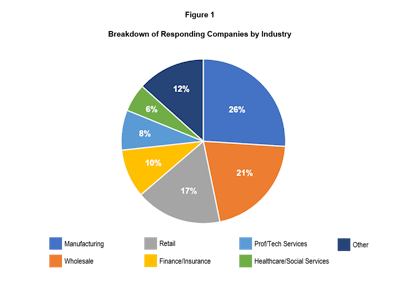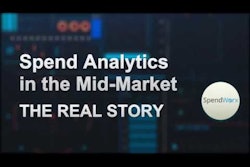
Editor’s Note: The following article is brought to you by SpendWorx in partnership with the Supply Chain Network.
The last few years have seen significant changes in the world of spend analytics with development of new technologies and consolidation in the solution provider market. At the same time, enterprises have continued to face many of the same challenges they have struggled against for years, such as poor quality data, decentralized buying and fragmented procurement processes.
In November 2017, I met with a focus group of 18 southern California procurement executives to capture input for a presentation I was preparing on the subject of spend analytics in the mid-market. The companies represented ranged in annual revenue from $250 million to $900 million and operated in industries that included healthcare, industrial manufacturing, financial services, retail and telecommunications. Four findings surfaced during the day that were relevant to the majority of the companies present:
- Sixteen of the companies were facing challenges with the “block and tackle” spend analytics processes of data extraction, cleansing and classification.
- Twelve of the companies had used newer spend analytics tools such as autoclassification and dashboard reporting but had experienced mixed results, due in most cases to poor underlying data quality.
- All companies present felt that spend analytics technology providers did not understand the unique procurement environments of mid-market companies.
- All companies present recognized the value proposition of having a formal best practice spend analytics process.
Following the meeting I decided to investigate whether the above themes were representative of the mid-market as a whole. To this end, I worked with a third-party survey company during January and February 2018 to issue an online survey to the executive responsible for procurement at 6,717 U.S. companies with annual revenues between $100 million and $1 billion across multiple industry sectors. The survey asked the executives for input in the following four areas as they related to their own companies:
- The priority of spend analytics compared to other procurement initiatives
- The ease of difficulty of obtaining accurate and timely procurement information
- The main issues that prevent access to procurement information
- The most important spend analytics capabilities to develop or acquire
Usable responses were obtained from the head procurement executives at 419 companies. This equates to a response rate of 6.2 percent, which is in line with typical response rates for comparable surveys. A breakdown of the 419 companies by industry is shown in Figure 1 and a breakdown by annual revenues in Figure 2. The three largest industry sectors represented by the respondents were manufacturing (109 companies, or 26 percent), wholesale (88 companies, or 21 percent) and retail (71 companies, or 17 percent). In terms of annual revenues, 45 percent of the companies fall in the range $250 million to $499 million, 35 percent in the range of $100 million to $249 million,13 percent in the range of $250 million to $749 million, and 7 percent in the range $750 million to $1 billion.
Survey Questions and Results
Question 1: How much of a priority is it for your company to have a strong spend analytics capability?
Of the 419 responding procurement executives, some 222 (53 percent) stated that spend analytics was either a high or essential priority in their companies (see Figure 3). Of the 84 executives working for companies with annual revenues of $500 million to $1 billion, this percentage increased to 61 percent (51 companies), confirming the widely held view that larger companies with higher procurement expenditures will generally implement tighter control over their spend. For the 335 companies with annual revenues of $100 million to $499 million, the percentage of them for which spend analytics was a high or essential priority stayed respectably high at 51 percent.
Question 2: How easy or difficult is it to obtain accurate and timely procurement decision making information in your company?
Here the survey respondents were asked to assess 10 types of procurement-related information in terms of the ease or difficulty of obtaining the information in an accurate and timely form in their companies. The results in Figure 4 show that the three types of information assessed as being most difficult to obtain in accurate and timely form are company-wide cleansed and classified spend, transaction level procure-to-pay data, and market price information. Procurement-related information presenting less of a challenge is internal systems information required to support procurement processes (e.g. financials, inventory, HR, etc.), functional requirements for sourcing and user demand forecasts.
Question 3: What are the main issues preventing access to accurate and timely procurement information in your company?
In this question, the survey respondents were provided with a list of 20 commonly faced procurement data issues and asked to indicate the degree to which each was an issue in their own company. It can be seen from the results in Figure 5 that the issues identified as causing the most problems are strongly correlated with the types of decision making information that are most difficult to obtain in accurate and timely form from Figure 4. For example, the top 3 issues in Figure 5 (decentralized buying, lack of detailed transaction data and poor data quality) all directly contribute to the fact that accurate and timely company-wide cleansed and classified spend is the most difficult type of information for procurement decision makers to obtain in Figure 4.
Other issues identified as either extreme or moderate by more than 50 percent of the executives included non-useful chart of account descriptions, lack of detail on vendor invoices, lack of a consistent vendor performance measurement methodology, and too much spend without a purchase order. Issues identified by the responding executives as less of a concern toward the bottom of Figure 5 included insufficient internal resources for data collection, spend data in non-electronic format, poor or incomplete requirements forecasts from users, and lack of internal analytical skills to identify insights and opportunities from spend data.
Question 4: What in your opinion are the most important spend analytics capabilities for your company to develop or acquire? In this final question the responding mid-market procurement executives were provided with a list of spend analytics-related capabilities and asked to identify which in their opinion were the most important capabilities for their company to develop or acquire bearing in mind their company’s unique procurement and data environment. From Figure 6 it can be seen that over 80 percent of the procurement executives identified techniques to efficiently and effectively cleanse and classify spend data from all AP and other source systems as either very important or important. Over 50 percent of respondents further identified line item analysis, user-friendly analytics and reporting tools (for working on the already cleansed and classified data) and supplier compliance as capabilities that were also either very important or important for their organizations. Some of the capabilities regarded as lower in importance (at least at this moment in time) included artificial intelligence (AI), predictive analytics and machine learning.
Conclusions
The survey of mid-market procurement executives produced findings consistent with the November 2017 focus group in a number of areas, namely:
Continuing challenges with basic spend analysis issues. The survey confirmed the finding of the focus group related to continuing issues with procurement data. Based on the survey results, mid-market companies still experience significant difficulties in achieving enterprise-wide spend visibility due to challenges in extracting, cleansing and classifying spend data.
Advanced spend analytics technologies not yet on radar. A clear finding from the survey was that mid-market procurement executives are more concerned with “block and tackle” issues like cleansing, classification and getting a basic analysis and reporting capability up and running than they are about AI, cognitive procurement or machine learning. The implication is that until the mid-market has spend visibility mastered, the penetration of advanced analytics into the sector will be limited.
Smaller companies are on board with the power of procurement. For over 50 percent of responding companies between $100 million and $500 million annual revenues, to identify spend analytics as an essential or high priority is a clear indicator of how far smaller mid-market enterprises have come in embracing the value of a proactive approach to procurement. Small companies that move first to implement strong spend analytics capabilities stand to gain significant and sustainable cost and profitability advantages over their similarly sized competitors.
Lessons for solution providers. Another theme to emerge from the survey was the perception that technology providers did not understand some of the unique requirements of mid-market companies compared to Fortune 500 companies when it came to spend analytics. The surprisingly low importance placed on the newer technologies in the survey should be a warning to solution providers that the majority of mid-market companies still need help finding their way out of the spend visibility forest. Only then will they be able to look ahead and appreciate the value that the new technologies will bring.
Mark Usher is the founder and CEO of SpendWorx LLC, a provider of procurement analytics and consulting services to mid-market corporations. Usher has over 20 years of procurement and supply chain experience as a practitioner and a consultant. He holds an MBA from the University of Chicago Booth School of Business and is a Supply & Demand Chain Executive Pro to Know.











